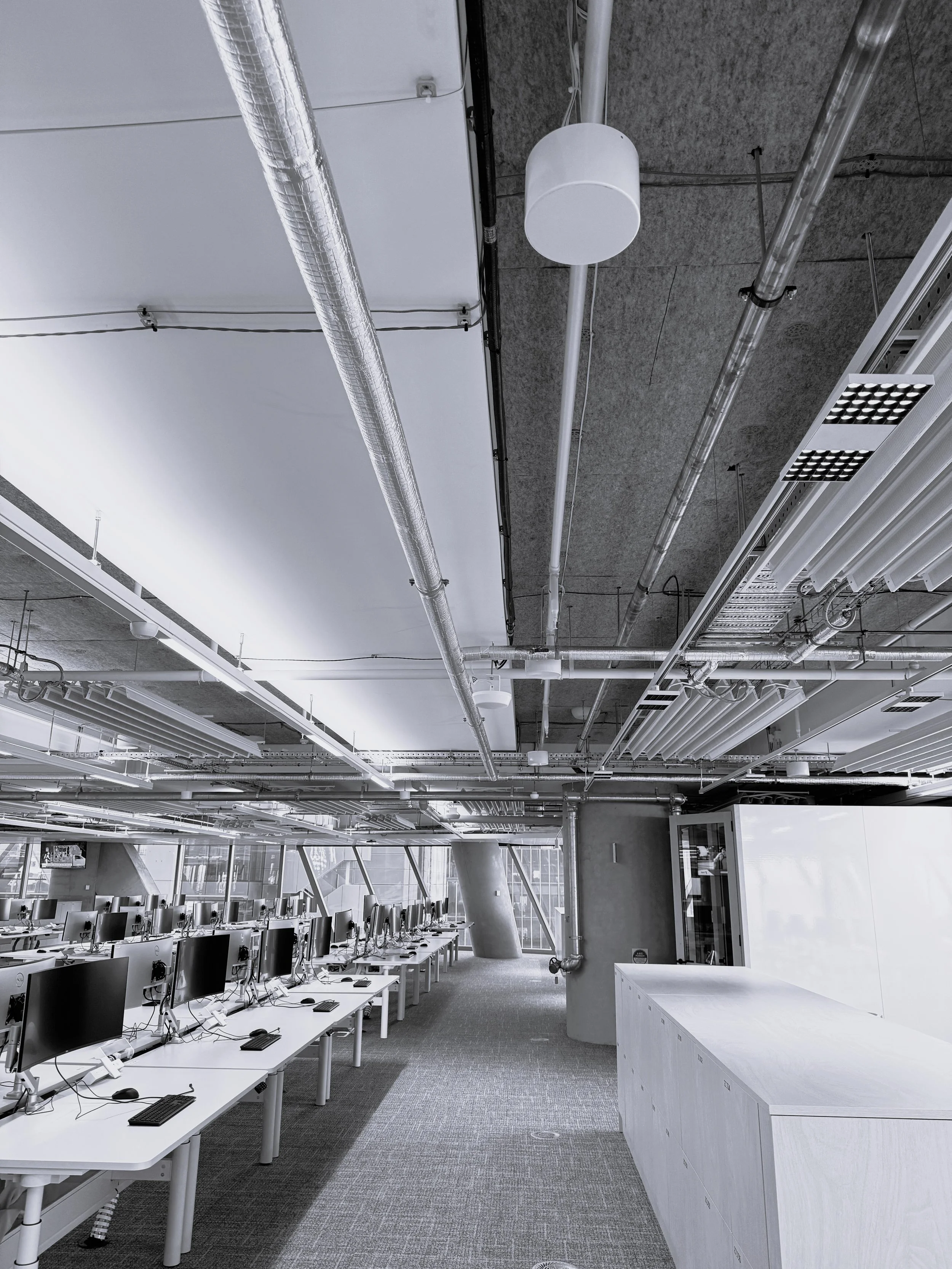
Sound Masking for Performance Workspace

Sound Masking for Performance Workspace
Traditionally, in interior fit-out acoustic specifications, ambient sound level has been considered a by-product of air conditioning systems. Consultants would attempt to engineer the air system using various sound-absorbing products to deliver a comfortable level of ambient sound of varying spectra (usually low-frequency dominant) across the workspace. More modern systems produce less sound, and some, like chilled beam systems, are almost silent.
Incorrect levels of ambient sound can have dramatic effects on workplace performance. If the ambient sound level is too low, even the highest quality fit-out in the most premium office space will fail to provide comfortable, productive, and private conditions.
Considering the cost of designing a high-performance workplace, relying on air conditioning to provide spectrally accurate and uniform sound is a high-risk strategy. In response, sound masking technology has evolved to deliver highly accurate, zonally controlled ambient sound throughout the entire fit-out.
For those unfamiliar with this technology, it's not new—the first systems appeared in the 1950s—but the level of accuracy has improved greatly in recent years.
So how does it work, and what are the benefits?
So how does it work, and what are the benefits?
You’ve probably experienced being in an office where, in order to speak with someone, you instinctively lowered your voice. This is a perfectly natural response to low ambient sound conditions. Humans are not particularly good at adjusting to such environments. As you enter a space, you subconsciously assess how much you can hear and how far away sounds originate, and then adjust your speech volume accordingly to avoid interrupting others.
Trying to concentrate at your desk in such conditions can significantly impact productivity. When ambient sound is too low, not only are sounds more easily heard, but the detail of conversations becomes crystal clear and impossible to ignore. The result is constant interruption and the time it takes to refocus on the task. Numerous studies have confirmed the impact on productivity.
In sound-starved spaces, people often avoid conversations altogether or retreat to breakout areas, communal zones, or small single-person booths—solutions that are costly themselves and in both time and productivity.
The other major issue affecting workplace performance is privacy. The flip side of distraction is the lack of confidentiality for those speaking. As a result, private conversations or meetings require separate rooms. This common workplace behavior demands a detailed approach to partition design to achieve the required privacy levels, based on the expected confidentiality of the discussions.
This is where the concept of the Privacy Index comes in. It's a calculated metric based on the sound isolation capability of the walls and ceilings compared with the ambient sound level in the space. While the performance of partitions can be tested and corrected, ambient sound provided solely by air conditioning is generally inadequate. Even if an appropriate decibel level is reached, it does little to effectively mask speech frequencies.
Fortunately, the trend is shifting, with more acoustic consultants adopting sound masking. These systems typically consist of arrays of speakers zoned by the use case of each office area. They are installed above suspended ceilings or mounted visibly in open-ceiling environments. A central controller—mounted in the ceiling or in a riser—generates the sound (indistinguishable from the sound of air conditioning) and is connected to a network, allowing remote access for adjustments by contractors when needed.
This shift in acoustic design is a major improvement. Instead of 'hoping' air conditioning will provide adequate ambient sound, sound masking establishes a controllable acoustic foundation throughout the entire fit-out. Open-plan spaces are sculpted for performance, with breakout areas kept quieter so people instinctively lower their voices, while adjacent workspaces are slightly louder to avoid disruption. The sound levels can adjust automatically throughout the day in response to changing levels of audible activity. Additional soundscapes—like music or natural sounds—can also enhance common or public areas such as receptions, cafés, breakout spaces, or even toilets. Although experimented with, the sound of running water or similar over open office space has been found to draw attention to the systems and defeating the purpose and increasing trips to the toilet!.
Fixed masking levels in enclosed rooms further support partition performance. If privacy is a concern, simply increasing the masking level in or around that room can usually fix the issue. When incorporated from the beginning of a project, higher levels of privacy can be achieved using less material—reducing both cost and the need for slab to slab construction, which is often expensive and difficult to execute.

sound thinking.

high performance acoustics for the workplace
Our commitment is to excellent sound. We work with you right from the moment you decide what you want to achieve from your space, through to ongoing calibration work to stay in step with your changing workforce.
optimal calibration
— the sound to suit your setup.
flexible interactivity
— adaptive sound zones, to evolve as your needs do.
personal comforts
— synchronised zoning to keep everyone happy.

the pursuit of perfect sound is what drives us.
Advice when you need it
We coordinate the many moving parts, from conceptual sound design, installation and maintenance, creating seamless harmony between moments of quiet and focus, and times of buzz and energy.
Partnership how you want it
We collaborate with design professionals and acoustic consultants to create high performance environments that maximise productivity, speech privacy, and wellbeing.
Installation as you planned it
Harnessing years of experience, expertise and product development, we deliver sound design systems to some of Australia's most iconic and prestigious building projects.

our mission
We’re bringing workplace sound design out into the open. For too long an afterthought, we’re fighting back against the unnecessary sound distractions that fritter away our most valuable time at work.
Why shouldn’t the places we work in be as comfortable on our ears as they are beautiful to our eyes?












